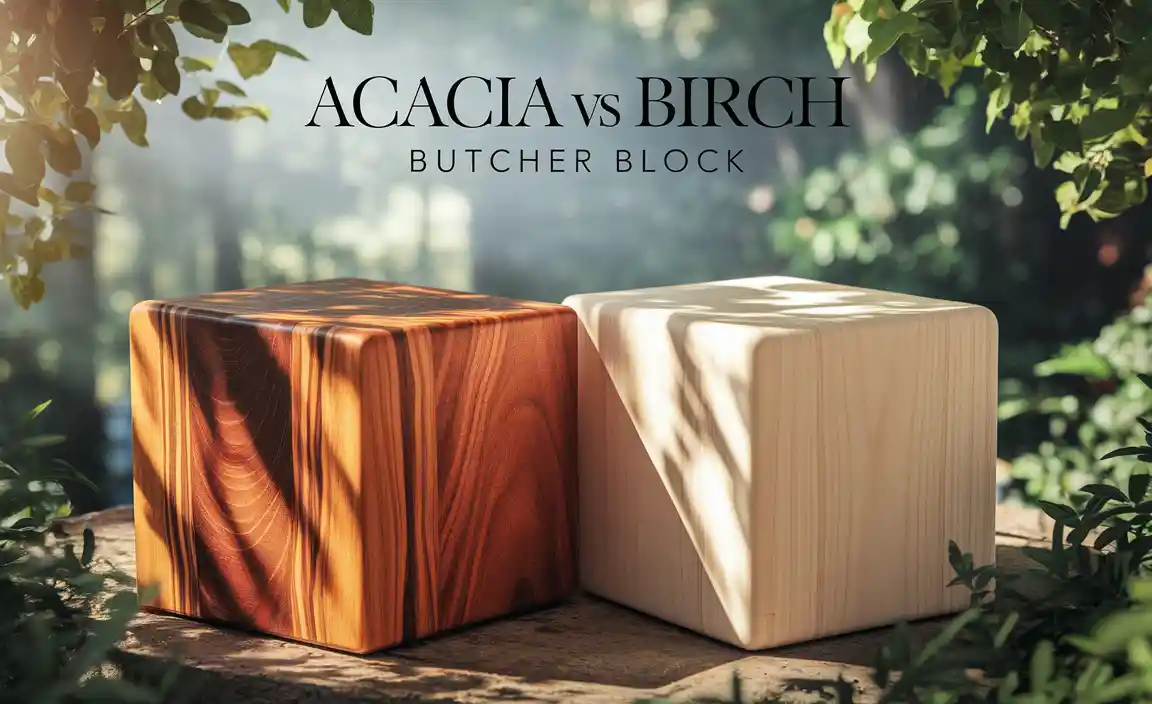The best battery-operated brad nailers for beginners offer cordless freedom, powerful performance, and user-friendly features for DIY projects. Look for models with adjustable depth settings, tool-free jam release, and ergonomic designs for comfortable use on a variety of woodworking tasks.
Hey there, fellow DIYers and woodworking enthusiasts! Jack Shaffer here from Nailerguy. Are you dreaming of building that perfect trim, crafting a beautiful picture frame, or finally tackling that wainscoting project without wrestling with an air hose and compressor? You’re not alone! Many beginners find themselves frustrated by the limitations of corded tools or the sheer cost and hassle of pneumatic setups. That’s where the magic of battery-operated brad nailers comes in. These cordless wonders can make your projects smoother, faster, and way more enjoyable. Stick around, and I’ll walk you through everything you need to know to pick the best battery operated brad nailer for beginners that’ll have you nailing with confidence in no time.
Table of Contents
Why Choose a Battery-Operated Brad Nailer? The Cordless Advantage
The biggest perk of a battery-operated brad nailer is obvious: freedom! No more tripping over air hoses, straining to reach awkward spots, or lugging around a heavy compressor. This cordless convenience is a game-changer for DIYers and hobbyists, especially when working on smaller projects, trim work, or in areas without easy access to power outlets. You can grab it, load it, and start nailing in seconds.
Here’s a quick rundown of why they’re so great for beginners:
Ultimate Portability: Take your nailer anywhere – inside, outside, up ladders, or even to a remote workshop.
Quick Setup: Forget compressors and hoses. Just insert a battery and nails, and you’re ready to go.
Safety: No air hoses mean no tripping hazards and no risk of over-inflation or hose bursts.
Cleanliness: No compressor means no oil to worry about, keeping your workspace cleaner.
Ease of Use: Many models are designed with user-friendly features that make them perfect for those new to nail guns.
Understanding the Basics: What is a Brad Nailer?
Before we dive into specific models, let’s clarify what a brad nailer is and what it’s best for. A brad nailer drives thin, small-headed nails called “brads.” These nails are designed for light-duty applications where the fastener head needs to be nearly invisible or easily hidden. Think of tasks like:
Attaching trim and molding (baseboards, crown molding, window/door casings)
Securing paneling and beadboard
Assembling small wooden boxes and furniture components
Crafting and DIY projects requiring delicate fastening
Upholstery work (though a dedicated upholstery stapler might be better for some tasks)
If you’re looking to drive thick framing nails or stout finishing nails, a brad nailer isn’t the right tool. For those jobs, you’d look at a framing nailer or a finishing nailer, respectively.
Key Features to Look For in a Battery-Operated Brad Nailer
When you’re just starting, it’s easy to get overwhelmed by all the technical specs. But don’t worry, I’ll break down the most important features to consider for a great beginner experience:
1. Power Source & Battery System
Battery Voltage (V): Higher voltage generally means more power. For brad nailers, 18V or 20V (often the same thing, just different marketing) is standard and provides ample power for most DIY tasks. Some heavy-duty models might use higher voltages, but for beginners, 18V/20V is usually perfect.
Battery Capacity (Ah – Amp-hours): This tells you how long the battery will last on a charge. A higher Ah means longer run time. For occasional use, 2.0Ah or 3.0Ah might be sufficient. For more frequent use, consider 4.0Ah or 5.0Ah.
Interchangeable Batteries: Many brands have a battery platform. If you already own tools from a brand like DeWalt, Ryobi, or Makita, you might be able to use their existing batteries and chargers with their brad nailer, saving you money.
2. Nail Size & Capacity
Nail Gauge: Brad nailers typically use 18-gauge brads. These are thin (about 1mm in diameter) and have a small head.
Nail Length: Most battery brad nailers can handle nails from 3/4 inch up to 2 inches. Make sure the nailer you choose can accommodate the lengths you’ll need for your typical projects.
Nail Magazine Capacity: This is how many nails the tool can hold at once. Higher capacity means less frequent reloading. Look for at least 100 nails for good efficiency.
3. Firing Modes
Sequential Mode (Single Fire): This is the safest mode. You must press the safety contact tip onto the workpiece and then pull the trigger to fire one nail. This prevents accidental nail discharge.
Contact Mode (Bump Fire): This mode allows you to fire nails rapidly by pressing the contact tip onto the workpiece and then moving the trigger. It’s faster but requires more caution.
Mode Selector Switch: The best beginner-friendly nailers offer an easy way to switch between these modes, often with a simple button or lever. For safety, always start with sequential mode.
4. Depth Adjustment
Tool-Free Depth Control: This is a crucial feature for beginners. It allows you to easily adjust how deep the nail drives into the wood without needing tools. You can set it deeper for hardwoods or softer for pine, or adjust for different material thicknesses. A dial or knob near the nose of the nailer is common.
5. Jam Release Mechanism
Tool-Free Jam Release: Jams happen! A good brad nailer will have an easy-to-access mechanism to clear jammed nails without needing screwdrivers or tools. This usually involves opening up a cover at the front of the nailer.
6. Ergonomics and Weight
Comfortable Grip: A cushioned, ergonomic handle makes a huge difference, especially during longer projects.
Weight Distribution: A well-balanced nailer feels lighter and is less fatiguing to use. Battery-operated models are generally heavier than pneumatic ones, so try to find one that feels comfortable in your hand.
7. LED Light
Work Light: Many modern cordless tools come with an integrated LED light that illuminates your working area. This is incredibly handy for positioning the nail accurately, especially in dim lighting.
8. Belt Hook
Convenient Storage: A belt hook is a small but useful feature that allows you to hang the nailer on your belt or a shelf when not in use, keeping it handy and out of the way.
Top Battery-Operated Brad Nailers for Beginners (and Why!)
Choosing the best battery operated brad nailer for beginners can feel daunting with so many options. Based on user reviews, expert opinions, and my own experience, here are a few top contenders that consistently receive high marks for ease of use, performance, and value.
Here’s a quick comparison of some popular choices:
| Feature | DeWalt 20V MAX XR Brushless Brad Nailer (DCN680B) | Ryobi 18V ONE+ Cordless Brad Nailer (P3200) | Metabo HPT 18V Brushless Brad Nailer (NT1850AE) |
| :—————— | :———————————————— | :—————————————— | :———————————————— |
| Voltage | 20V MAX | 18V | 18V |
| Nail Gauge | 18-Gauge | 18-Gauge | 18-Gauge |
| Nail Length | 5/8″ to 2″ | 5/8″ to 1-1/2″ | 5/8″ to 2″ |
| Magazine Capacity | 110 nails | 100 nails | 100 nails |
| Firing Mode | Sequential & Contact | Sequential & Contact | Sequential & Contact |
| Depth Adjustment| Tool-free | Tool-free | Tool-free |
| Jam Release | Tool-free | Tool-free | Tool-free |
| Weight (Tool Only) | ~ 5.5 lbs | ~ 5.5 lbs | ~ 6.5 lbs |
| Key Benefits | Powerful, reliable, excellent battery platform | Affordable, good value, extensive ONE+ system | Compact, efficient, brushless motor |
| Considerations | Can be pricier | Slightly shorter max nail length | Heavier than some competitors |
Note: Weights and specifications can vary slightly based on battery configuration and current product revisions.
Let’s dive a little deaper into why these are great choices:
DeWalt 20V MAX XR Brushless Brad Nailer (DCN680B)
DeWalt is a titan in the cordless tool world, and their 20V MAX XR series is a favorite for good reason. The DCN680B offers a great balance of power, performance, and user-friendly features. Its brushless motor ensures efficient power delivery and longer tool life. The tool-free depth adjustment is precise, and the jam release is straightforward. If you’re already invested in the DeWalt 20V platform, this is a natural and excellent choice. It consistently drives nails flush without over-penetration, a common pitfall for beginners.
Ryobi 18V ONE+ Cordless Brad Nailer (P3200)
Ryobi’s 18V ONE+ system is incredibly popular with DIYers because of its affordability and the vast range of tools available. The P3200 brad nailer is a fantastic entry-level option. It’s lightweight, easy to handle, and offers all the essential features like tool-free depth control and jam release. While it might not have the sheer power for the hardest woods or the longest nails compared to some premium models, it’s more than capable for most trim work, craft projects, and DIY home improvements. It’s a very budget-friendly way to get into cordless nailing.
Metabo HPT 18V Brushless Brad Nailer (NT1850AE)
Metabo HPT (formerly Hitachi Power Tools) offers some seriously robust tools. Their 18V Brushless Brad Nailer is known for its consistent performance and efficient operation. The brushless motor contributes to its power and battery efficiency. It features a convenient mode selector for easy switching between sequential and contact firing, precise depth adjustment, and a tool-free nose release for clearing jams. While it might be slightly heavier than some others, its smooth operation and reliability make it a strong contender.
Step-by-Step Guide: Using Your New Battery-Operated Brad Nailer Like a Pro
Alright, you’ve got your new nailer! Let’s get it loaded and ready to go. Using a brad nailer is pretty straightforward, but following these steps will ensure you get great results and stay safe.
Step 1: Prepare Your Workspace and Safety Gear
Clear the Area: Make sure you have enough space to work comfortably and safely. Remove any clutter that could cause you to trip or snag.
Wear Safety Glasses: This is non-negotiable! Always wear ANSI-approved safety glasses or goggles. Small nails can ricochet. You might also consider hearing protection for extended use, though brad nailers are relatively quiet.
Secure Your Workpiece: If you’re working with small pieces, clamp them down or use a vise. You don’t want your project moving while you’re trying to place a nail.
Step 2: Load the Brad Nails
Identify the Magazine: Most brad nailers have a long, slender magazine that holds the nails.
Locate the Latch: There’s usually a spring-loaded latch or button at the end of the magazine.
Pull Back the Follower: Push the latch and pull the follower (the piece that pushes the nails forward) back to open the magazine.
Insert the Brads: Place a strip of 18-gauge brads into the magazine. Ensure the nails are facing the correct direction as per your tool’s manual (usually with the heads facing the side that will be visible first).
Release the Follower: Gently release the follower. It should smoothly push the nails forward into the firing chamber. Make sure the strip of nails is snug against the front of the magazine.
Check the Nail Count: Some nailers have a window to see how many nails are left.
Step 3: Choose Your Firing Mode and Adjust Depth
Select Sequential Mode First: For safety, always start with sequential mode. This prevents accidental firing. Refer to your tool’s manual to find the mode selector switch.
Set the Depth:
Take a scrap piece of the same wood you’ll be working with.
Set the depth adjustment knob or dial to its lowest setting (least deep).
Place the nailer against the scrap wood, press the safety contact tip firmly, and pull the trigger.
Check the nail depth. If it’s too shallow, increase the depth setting slightly and try again.
Continue making small adjustments until the nail head sits perfectly flush with the wood surface, or slightly below it, based on your preference for trim work.
Step 4: Position and Fire!
Align Your Shot: Place the brad nailer where you want the nail to go. Position the nose so the nail will be driven exactly where you need it.
Firmly Press the Safety Tip: The saftey contact tip (sometimes called the nose or trigger safety) must be pressed firmly against the workpiece. This engages the nailer’s firing mechanism.
Pull the Trigger: Once the safety tip is engaged and you’re holding the nailer steady, pull the trigger. You should hear a satisfying “thwack” as the nail is driven.
Maintain Firm Pressure: Keep pressing the safety tip down for a moment after firing.
Step 5: Switching to Contact Mode (If Needed)
Once you’re comfortable and have practiced in sequential mode, you can switch to contact mode for faster work if your project allows.
WARNING: In contact mode, as soon as the safety tip is pressed against the wood, the tool is ready to fire. Be extra careful not to accidentally pull the trigger while repositioning. Always keep your fingers away from the trigger when not actively driving a nail.
Step 6: Clearing Jams
Remove Battery: ALWAYS remove the power source (battery) before attempting to clear a jam.
Access the Jam Release: Locate the tool-free jam release mechanism, usually at the front of the nailer. Follow your tool’s manual to open it.
Remove Obstruction: Carefully pull out any jammed nails or broken nail fragments.
Close and Re-insert Battery: Close the jam release mechanism securely, re-insert the battery, and test fire on a scrap piece of wood.
Best Practices for Using Your Brad Nailer
Beyond the basic operation, here are some tips to help you get the most out of your battery-operated brad nailer and achieve professional-looking results:
Use the Right Nails: Always use the correct gauge and length of brads recommended for your specific nailer. Using the wrong type can cause jams or damage the tool.
Keep the Magazine Full: Don’t let the magazine run completely empty if you can help it. Reloading a few nails at a time is more efficient than waiting until it’s empty.
Maintain a Consistent Angle: Try to drive nails perpendicular to the surface to prevent them from bending or popping out.
Drive Nails into Solid Material: Avoid firing nails into thin air or the edge of a workpiece where there isn’t enough material to hold them. A good rule of thumb is to ensure the nail will penetrate at least 1/2 inch into solid material.
Don’t Overtighten: With precise depth control, you shouldn’t need to push excessively hard. Let the tool do the work. Too much pressure can sometimes lead to over-driven nails or marring the wood surface.
Consider Nail Placement: For trim, often placing nails near the edges where they will be less visible is ideal. However, ensure there’s enough material for them to grip.
Woodworking and DIY Projects Perfect for Battery Brad Nailers
The versatility of battery-powered brad nailers means they can be your go-to tool for a surprising number of projects.
Trim and Molding Installation: This is the bread and butter for brad nailers. Baseboards, crown molding, window casings, door frames – they all benefit from the clean, hidden fasteners a brad nailer provides.
Picture Frames and Mirror Frames: Creating sturdy, professional-looking frames is a breeze.
Cabinet Construction and Installation: Secure face frames to cabinet boxes or attach decorative trim elements.
Molding on Furniture: Add decorative trim or beadboard to cabinet doors, shelves, or other furniture pieces.
Small Box Making: Assemble decorative boxes, keepsake boxes, or even simple workshop organizers.
DIY Crafts: From holiday decorations to custom gifts, brad nailers are invaluable for hobbyists.
Upholstery Projects (with caution): While not their primary purpose, brad nailers can sometimes be used to tack fabric in place before stapling, especially on



